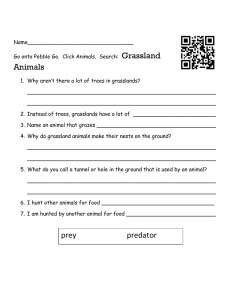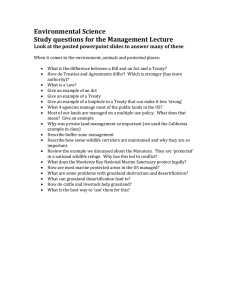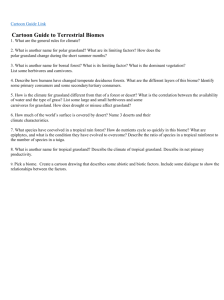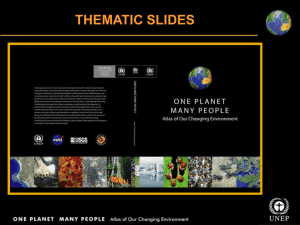Extensively used grassland as a basis of low input livestock systems
advertisement
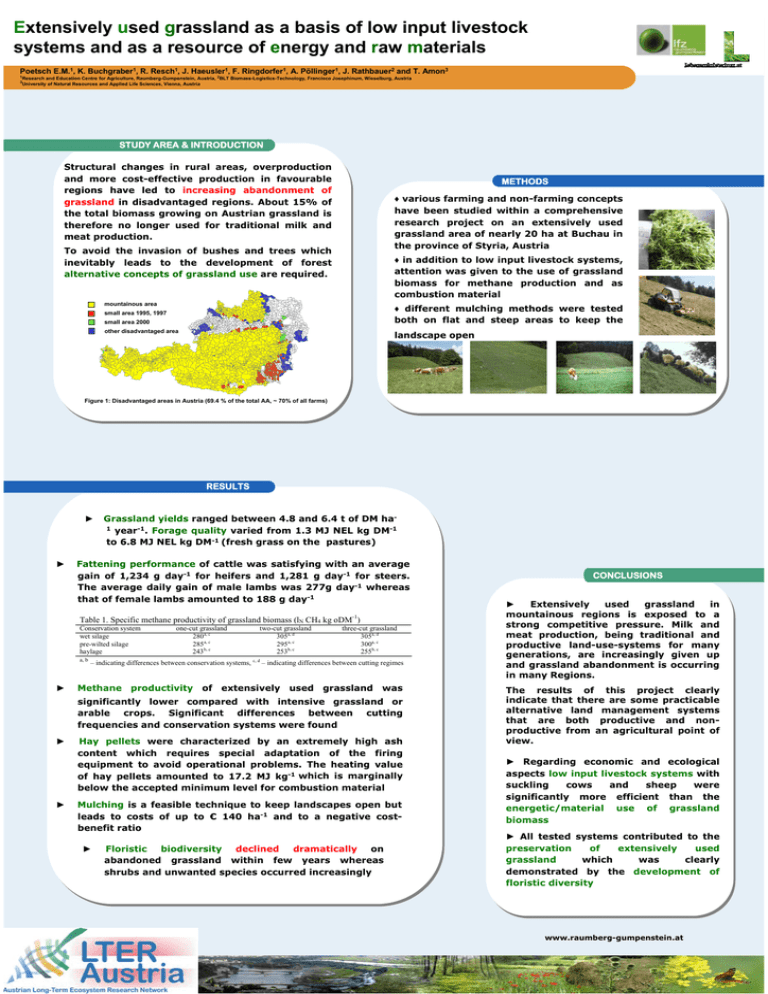
Extensively used grassland as a basis of low input livestock systems and as a resource of energy and raw materials Poetsch E.M.1, K. Buchgraber1, R. Resch1, J. Haeusler1, F. Ringdorfer1, A. Pöllinger1, J. Rathbauer2 and T. Amon3 1 Research and Education Centre for Agriculture, Raumberg-Gumpenstein, Austria, 2BLT Biomass-Logistics-Technology, Francisco Josephinum, Wieselburg, Austria University of Natural Resources and Applied Life Sciences, Vienna, Austria 3 STUDY AREA & INTRODUCTION Structural changes in rural areas, overproduction and more cost-effective production in favourable regions have led to increasing abandonment of grassland in disadvantaged regions. About 15% of the total biomass growing on Austrian grassland is therefore no longer used for traditional milk and meat production. METHODS ♦ various farming and non-farming concepts have been studied within a comprehensive research project on an extensively used grassland area of nearly 20 ha at Buchau in the province of Styria, Austria To avoid the invasion of bushes and trees which inevitably leads to the development of forest alternative concepts of grassland use are required. ♦ in addition to low input livestock systems, attention was given to the use of grassland biomass for methane production and as combustion material mountainous area ♦ different mulching methods were tested both on flat and steep areas to keep the small area 1995, 1997 small area 2000 other disadvantaged area landscape open Figure 1: Disadvantaged areas in Austria (69.4 % of the total AA, ~ 70% of all farms) RESULTS ► ► Grassland yields ranged between 4.8 and 6.4 t of DM ha1 year-1. Forage quality varied from 1.3 MJ NEL kg DM-1 to 6.8 MJ NEL kg DM-1 (fresh grass on the pastures) Fattening performance of cattle was satisfying with an average gain of 1,234 g day-1 for heifers and 1,281 g day-1 for steers. The average daily gain of male lambs was 277g day-1 whereas that of female lambs amounted to 188 g day-1 Table 1. Specific methane productivity of grassland biomass (lN CH4 kg oDM-1) Conservation system wet silage pre-wilted silage haylage a, b ► one-cut grassland 280a, c 285a, c 243b, c two-cut grassland 305a, d 295a, c 253b, c three-cut grassland 305a, d 300a, c 255b, c – indicating differences between conservation systems, c, d – indicating differences between cutting regimes Methane productivity of extensively used grassland was significantly lower compared with intensive grassland or arable crops. Significant differences between cutting frequencies and conservation systems were found ► ► Hay pellets were characterized by an extremely high ash content which requires special adaptation of the firing equipment to avoid operational problems. The heating value of hay pellets amounted to 17.2 MJ kg-1 which is marginally below the accepted minimum level for combustion material Mulching is a feasible technique to keep landscapes open but leads to costs of up to € 140 ha-1 and to a negative costbenefit ratio ► Floristic biodiversity declined dramatically on abandoned grassland within few years whereas shrubs and unwanted species occurred increasingly CONCLUSIONS ► Extensively used grassland in mountainous regions is exposed to a strong competitive pressure. Milk and meat production, being traditional and productive land-use-systems for many generations, are increasingly given up and grassland abandonment is occurring in many Regions. The results of this project clearly indicate that there are some practicable alternative land management systems that are both productive and nonproductive from an agricultural point of view. ► Regarding economic and ecological aspects low input livestock systems with suckling cows and sheep were significantly more efficient than the energetic/material use of grassland biomass ► All tested systems contributed to the preservation of extensively used grassland which was clearly demonstrated by the development of floristic diversity www.raumberg-gumpenstein.at

